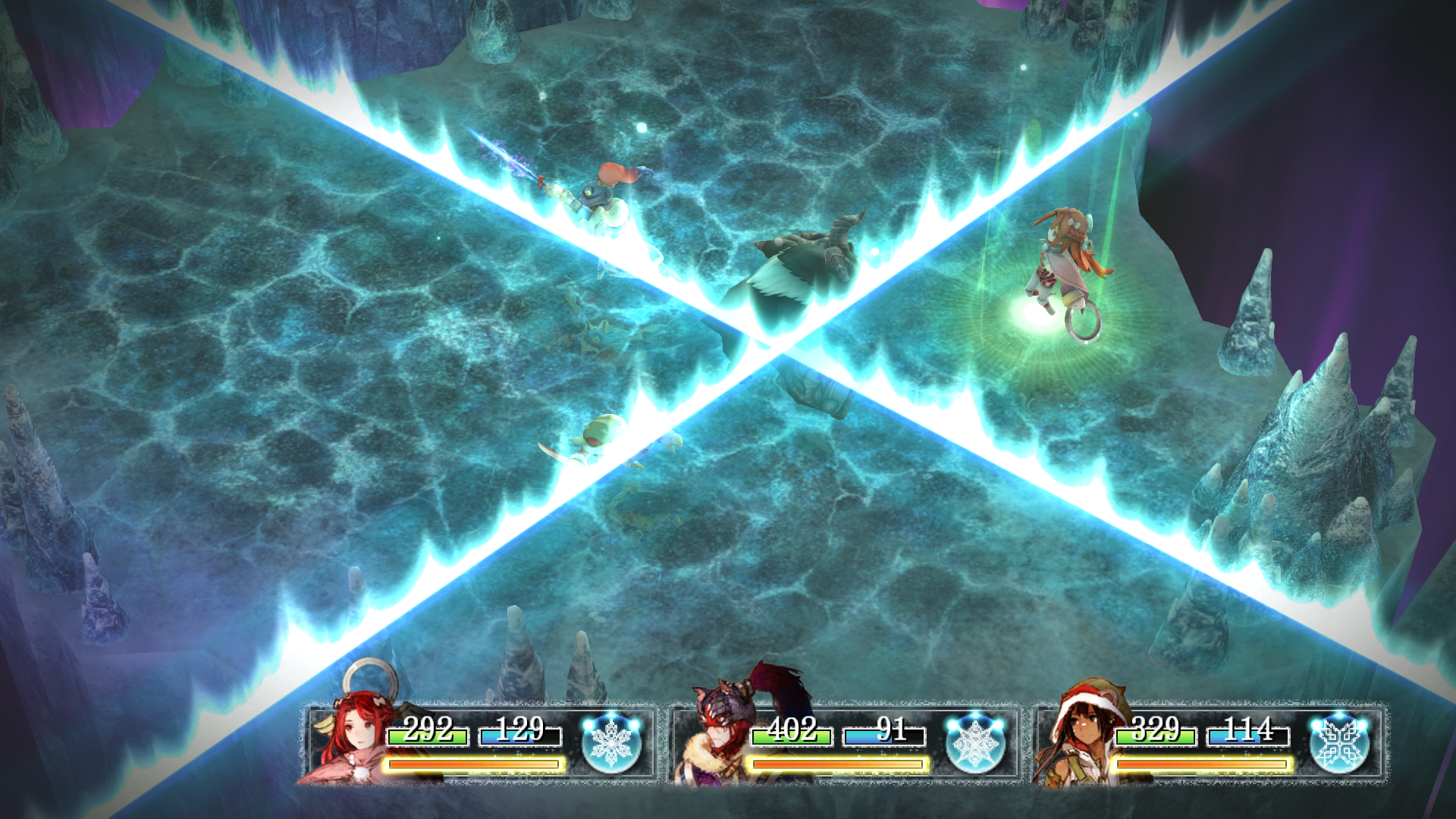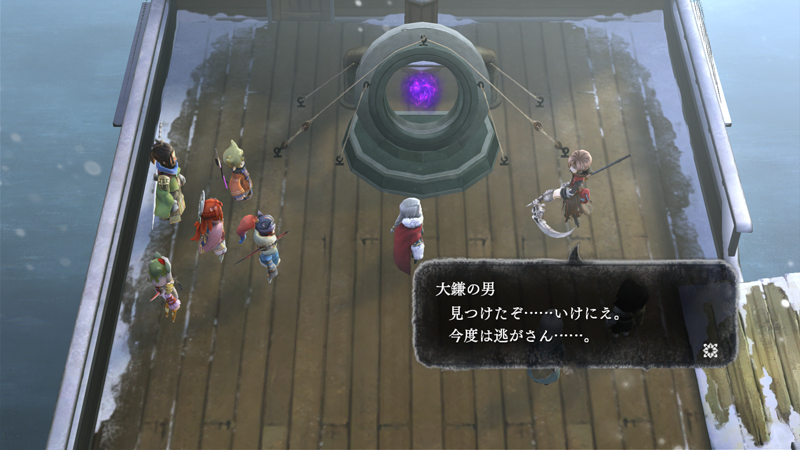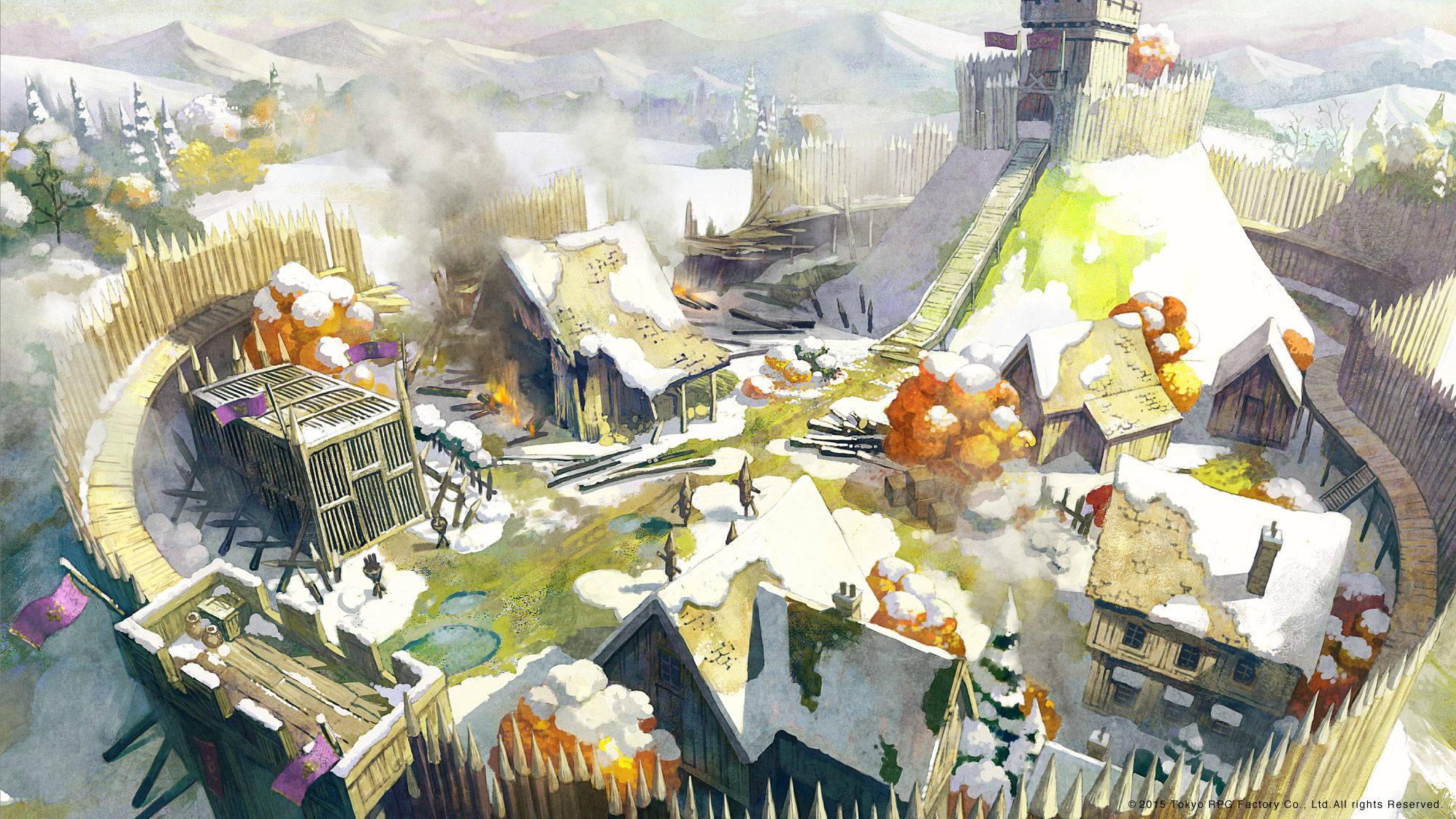From January 29 to February 18, 2016, PlayStation Japan ran a 4-part interview with Dengeki Game Media’s Editor-in-Chief, Satoshi Eguchi, and Square Enix/Tokyo RPG Factory staff on its blog.
The topic of discussion was Tokyo RPG Factory’s debut game, Ikenie to Yuki no Setsuna (“Setsuna of the Snow and Sacrifice,” also “Ephemerality of Snow and Sacrifice”). On March 14, 2016, Square Enix announced that Ikenie to Yuki no Setsuna would be released overseas on PS4 and Steam platforms in Summer 2016 under the title I Am Setsuna.
This is a partial translation of Part 1 of the interview, which focuses on the conception of Ikenie to Yuki no Setsuna as a project and of Tokyo RPG Factory as a company. The next part will be published next week.
Dengeki Game Media’s Editor-in-Chief Satoshi Eguchi asks this project’s key people about its beginnings and their thoughts on the “RPG.”
Participants:
Yosuke Matsuda – Square Enix Holdings Co., Ltd., President and Representative Director
Kengo Uchibori – Tokyo RPG Factory, Ikenie to Yuki no Setsuna Producer
Atsushi Hashimoto – Tokyo RPG Factory, Ikenie to Yuki no Setsuna Director
Satoshi Eguchi – Dengeki Game Media, Editor-in-Chief
Selecting the brave souls for this project
Satoshi Eguchi (hereafter “Eguchi”): I’d heard this project, Ikenie to Yuki no Setsuna, came about through some special circumstances. If you would allow me to ask about the details.
Yosuke Matsuda (hereafter “Matsuda”): To make a game, it’s normal to join a company and then make the game, but in the current era, more people have spoken out and said they want to be involved in various projects as freelancers. I decided to change the way games are made…how shall I put it, bypassing the company, I started out by thinking that maybe we could develop a game in a place that has a “community sharing the same goal.” I drafted plans and made offers inside and outside of our company. “I’m thinking about making this type of a game within this budget. Any takers?” I hoped to gather the people who raised their hands and who accepted the proposal.
Eguchi: This seems close to the way films and overseas games are made.
Matsuda: Right, and this process is prevalent overseas. So then we started up the project with the people who’d gathered together.
Eguchi: And with that came the inception of TRF (Tokyo RPG Factory).
Matsuda: Well, I didn’t actually create the name. I heard that the staff had deliberated and somehow the result was this…(laugh). Oh, and there’s one more reason…
Overseas, the number of successful works that pay homage to Japanese games is quite high. I thought about why those works couldn’t be created in Japan. Like, we’re seriously getting beaten at our own game (laugh). Then I also wondered if we can’t ever make authentic Japanese games again. These two reasons led to the creation of this Setsuna project.
Eguchi: Considering the way games are made in Japan today, especially with respect to consumer games, I feel that this is a necessary structure, so I can definitely empathize with you.
Matsuda: This isn’t necessarily relegated to the indies realm. Even under the SQUARE ENIX banner, I’d like to support this way of making those types of new things.
 Eguchi: Activating all of these game creators without a company must’ve been quite an interesting undertaking.
Eguchi: Activating all of these game creators without a company must’ve been quite an interesting undertaking.
Matsuda: Our ways of working have diversified. In this way, I think it’s possible to move in a direction where we surpass the framework of the organization to hire necessary personnel for the sake of one objective. On the other hand, we’re gaining more exposure and the conversations are getting bigger, so I’m feeling a little bewildered right now (laugh).
Eguchi: Certainly with this project, I can sense that its profile is rising.
Matsuda: I’m keeping a watchful eye on the situation as my heart’s pounding (laugh). I’d thought about some themes. As I had said previously, budget and time were limited to a certain degree, and though I wasn’t sure this game would be accepted by everyone, as I stood in the midst of this uncertainty I wanted someone to tell me which areas to direct our focus, where we should devote our energies so that we could make an outstanding work. I’d be fine with a mixed reception. The worst outcome is if Setsuna doesn’t generate any opinions or discussions.
It’s okay if people are divided into two groups: those who consider the game to be great, and others who disagree with that sentiment. But if we can create a title that gets curious people extremely curious about it, I think, in some way, that might be a win for us. Of course, the best outcome is if people play the game, it’s rated positively, and it sells well (laugh).
Eguchi: If the game is universally accepted then it falls flat, right? I think games are meant to be sharp.
Matsuda: I agree. By falling flat, it means that the game has no personality. I suppose you could say that wanting to create a sharp title that generates discussion was our starting point. It’s also the motivation for green lighting the TRF project.
Eguchi: On that subject, Mr. Uchibori, Mr. Hashimoto, you two raised your hands and wanted to make an RPG, is that right?
Kengo Uchibori (hereafter “Uchibori”): Yes. I was the first to raise my hand, and Mr. Hashimoto had also spoken up.
Matsuda: When we were gathering people and first had to pin down the theme of our project, we decided that we, as the originators to whom overseas works make throwbacks, need to do a solid job making a homage-type of work. What that meant was making a classic (oudou) Japanese game…
Eguchi: How did the game end up becoming an RPG?
Uchibori: For us who entered this industry because we like games, our memories of the RPG remain the strongest. If we had the chance to be able to make an RPG that we ourselves once enjoyed, we’d definitely take up the challenge. Also, because the team gathered here this time consists of all experts, we are incredibly excited to discover just how interesting an RPG made by this kind of team will be. In addition, I feel very strongly that this game is one that I myself would want to try playing. Thus, we fixated ourselves on the RPG. We put “RPG” in our company title as a result of this sentiment.
 Eguchi: This time we have Ikenie to Yuki no Setsuna, a first shot attempt using this new way of making games. Will there be opportunities to use this same creative process in the future?
Eguchi: This time we have Ikenie to Yuki no Setsuna, a first shot attempt using this new way of making games. Will there be opportunities to use this same creative process in the future?
Matsuda: This would depend on Setsuna’s success, of course, but I would like to continue using this process from now on.
Eguchi: Will we see another RPG, then?
Uchibori: Even with the term “RPG,” there are action RPGs and simulation RPGs. The answer would depend on how one defines “RPG.” This time our game follows a command-style RPG system, but if we are to talk about the next project, frankly speaking nothing has been decided yet (laugh).
Talking about our favorite RPGs
Eguchi: One of the concepts of this work is getting across to modern audiences the experience of “RPGs of the good old days.” Please allow me to ask all of you what your favorite RPGs are.
Uchibori: When I was a student I played games during every waking moment, but by far it would be FINAL FANTASY VI. I had a stack of games from the series up until then and felt that I had collected a grand and polished compilation…I went to the store and bought the game, carefully pocketed it and brought it home. When I turned the switch on for the first time, I watched the opening scene with the Magitek Armor walking in the snowfield and remember thinking, I’m going to be playing a seriously wicked game. This is by far my most cherished memory.
Atsushi Hashimoto (hereafter “Hashimoto”): Speaking also about my days as a student, I’m the ”go over there and buy that” type of person, so while attending classes, I did the same with games. I’d bring the game home and play it all day. Somehow I dedicated my days just to playing games (laugh). Well, I was a young lad who grew up playing Square Enix RPGs, so…(laugh). It’s hard to pick only one, but I’d have to go with Dragon Quest III. It’s kind of like a textbook to the JRPG, and I think plenty of people would say that it’s the game of their generation. Sorry about the uneventful story…(laugh).
Matsuda: In my case, well, I’d already started working when they were kids, so…(laugh). I’m interested in seeing how they take formative experiences from their youth to produce something with the same enthusiasm they’ve just showed. If they, people who’ve been blown away by RPGs of days past, use today’s technologies to make RPGs, I believe they can truly create something that people today will resonate with.
With everyone beholding the same vision––
Eguchi: At TRF, has the development process been significantly different from the way games have been traditionally been made?
Hashimoto: It’s a whole different animal (laugh). People in all different fields from all different places with all different circumstances have come together. Not to mention, everyone’s an expert. On top of that, we’ve leveraged each person’s skills, but in the end, the creative process has been pretty peculiar. Frankly, even as we were making the game, we were actually exploring and searching for the creative process itself, so towards the beginning we really had our share of troubles.
Eguchi: But even with these troubles in development, I would think that the creators can become even more aware that this is very much their own game.
Uchibori: This was actually the case. Ultimately we’d gathered together based on a plan, so only those who feel a strong attachment to this plan are here. This may just be a coincidence, but all of us gathered here feel an emotional affinity. That’s why we can have exchanges like, “In this part I want to capture the feeling found in that game” (laugh). I think this might be the top reason that this project had gone smoothly until the end. We gathered together for the same goal, and everyone is an expert in his or her own field, so in the end the goal we’d all had in mind was the same. That is huge. I’m glad that we could create [this game] with everyone holding on to the same vision until the very end.
Note: The interview continues, but the questions pertain to merits of the process by which TRF employees were selected (called この指とまれ in Japanese, lit. “Stay with the finger.” The meaning is something like, “everyone gather together”). Rather than translating line by line, providing a summary of TRF and Square Enix’s hopes for Ikenie to Yuki no Setsuna may prove more beneficial.
Summary of the interview’s end:
- Matsuda hopes that an impetus such as Setsuna will revitalize the Japanese video games industry. Sony is putting much effort behind indie games, so the PS4 is not associated with only “big titles.”
- Matsuda says creating games that deliver the same fun as RPGs of the past is a fresh idea, but just reviving the games of old days is not enough. Using the latest technology is necessary. He is not aiming for mere nostalgia but rather for games as “cutting edge.”
- Hashimoto says people at TRF are working hard to deliver a work that only they can produce. They do not intend to make the exact same games of yesteryear.
- Matsuda notes that Japanese games are still big topics overseas today. From the perspective of overseas managers, they say that games of all types, JRPG-ish games of all types are necessary. Matsuda takes this to mean that “authentic Japanese” games aren’t in enough supply, so the task then is to make them.
- Dengeki Editor-in-Chief Eguchi also hopes that Setsuna does well and that it revitalizes Japan’s video game industry.
Kudos to Jirokichi and Tyler Campbell for editing this translation.



Recent Comments